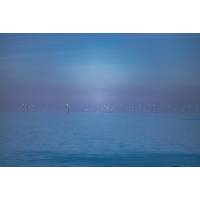
Norway Offers $193 Million Funding to Arctic Floating Wind Farm Project
power to the Arctic town of Hammerfest, beat out six other applicants in a tender by government agency Enova.Norway hopes that floating offshore wind will provide an industrial future for its offshore supply industry as well as a means of cutting emissions from oil and gas production by replacing gas turbines as a source of power supply."The government wants to make arrangements for floating offshore wind to become a new leg for the Norwegian supplier industry to stand on," Energy Minister Terje Aasland said in a statement.Floating wind such as GoliatVind could help to electrify offshore

Subsea Infrastructure Power Looks at Renewables
subsea microgrids with Glasgow Caledonian University, aimed at supporting the U.K.’s Innovation and Targeted Oil & Gas (INTOG) program – a targeted leasing round that encourages the use of wind energy to power offshore oil and gas infrastructure. Combining offshore wind with gas turbines in a micro-grid creates control system logic challenges, says Slorach, which they’re trying to resolve.It’s also working with German utility RWE after winning the operator’s first international innovation competition in July this year. Several use cases are being explored, including
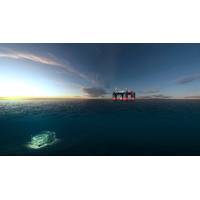
ABB to Power Chevron's Jansz-Io Compression (J-IC) Project in Australia
that bring us closer to a carbon-neutral future. This project reflects our close collaboration and trusted subsea history with Chevron and Aker Solutions.”“This game-changing technology significantly reduces power consumption and emissions compared to power generated offshore by local gas turbines and compressors located topside,” said Brandon Spencer, President, Energy Industries at ABB. “Subsea compressors are key to helping improve reservoir recoverability and ensuring optimal use of resources from existing fields.”Aker Solutions Confirms Major Subsea Compression Contract

Tackling the Energy Transition, the TechnipFMC Way
is to allow for further integration in the execution model – mainly, closer collaboration between the client and system integrator. This will enable consolidation of infrastructure and therefore reduced emissions. The main contributor to the emissions from upstream operations is running gas turbines on the platform. Electrification of the platforms with renewable energy either from shore or produced offshore is required. The main challenge here is cost. Some of the cost can be reduced by allowing for standardized solutions and our iEPCI contracting model, but some also needs to be financed
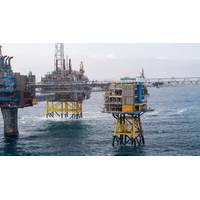
Equinor Sanctions Sleipner Field Electrification
for the Sleipner field center will entail laying a new power cable from Sleipner to the Gina Krog platform, which will be tied into the area solution for power from shore on the Utsira High. During periods when the power need is greater than the capacity in the area solution, Sleipner will use gas turbines, like they do today, to cover the power need.Anders Opedal, Equinor’s Executive Vice President for Technology, Projects and Drilling: “Today, we are pleased to submit development plans for Sleipner electrification that will provide both ripple effects and major new emission cuts on
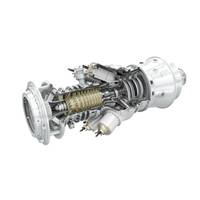
Siemens Equipment for Large Gas Field Project Offshore Malaysia
Siemens Gas and Power has been awarded a contract to supply gas turbine generators, gas turbines and centrifugal compressors for the Petronas' Kasawari gas field development project offshore Sarawak in Malaysia. The order was made by Malaysia Marine and Heavy Engineering (MMHE) which has formed a joint venture with TechnipFMC to execute the work for Petronas.Siemens will supply three SGT-300 industrial gas turbine generators (GTG), three mechanical-drive SGT-300 gas turbines and three DATUM centrifugal compressors for the Kasawari project in the South China Sea.With an estimated recoverable
SGRE Lands World’s Largest Floating OWF
some 140 kilometers from shore in an area with water depths of 260-300 meters between the Snorre and Gullfaks oil and gas platforms. Specifically, this wind power plant will be capable of meeting about 35 percent of the annual power demand of the Snorre and Gullfaks platforms.By reducing the use of gas turbines on the fields, the project helps cut CO2 emissions by more than 200,000 tons per year, equivalent to the annual emissions from 100,000 passenger cars.The floating foundations in the Hywind Tampen project are ballast-stabilized and anchored to the seabed with mooring lines. With their lightweight
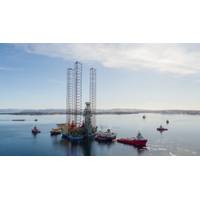
Drilling Rig in Norway Gets All its Power from Land to Cut Emissions
gas platforms off Norway already receive some power from land, such as Statoil's Troll A gas platform and Aker BP's Valhall. Statoil's giant Johan Sverdrup oilfield under development will also be powered from land. But this is the first drilling rig to get all its power from land, rather than from gas turbines on board the rig. Aker BP calculations show the Maersk Invincible, which will drill for oil and gas at the field, will reduce its annual carbon dioxide emissions by 15,200 tonnes and emissions of nitrogen oxide, another greenhouse gas, by 168 tonnes. Electricity in Norway is 100 percent
Statoil: Considerable Johan Castberg spin-offs
to just above NOK 12 billion. The Johan Castberg power solution effort reveals that costs related to land-based power, including technical challenges, represent a risk to both the timeline and feasibility of the project. “We have developed a highly energy-efficient solution involving use of gas turbines for power generation on Johan Castberg. By use of heat recovery we achieve a turbine power efficiency of 64%, which is an outstanding result from use of gas turbines on offshore platforms. The licence partners consider gas-fired power to be the most suitable and socio-economic solution for the


 February 2024
February 2024





